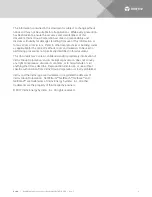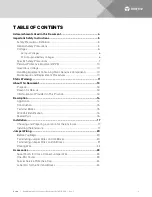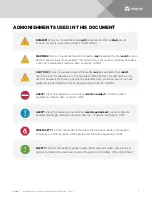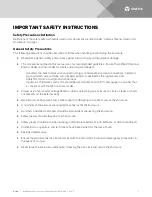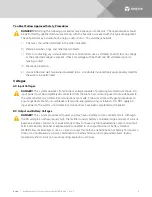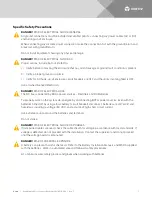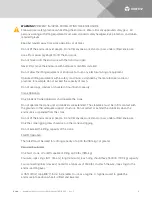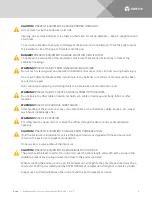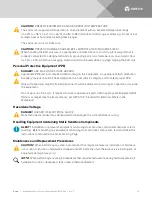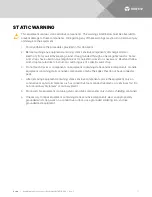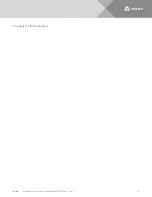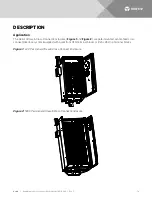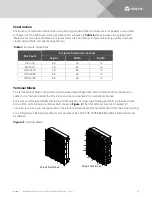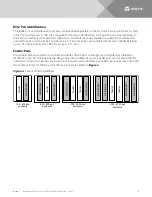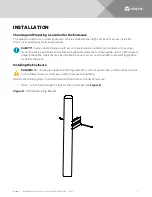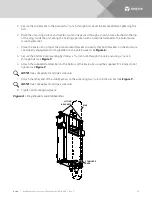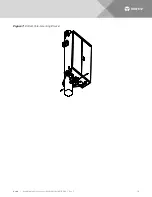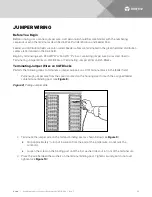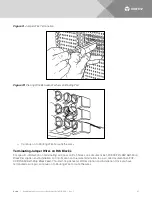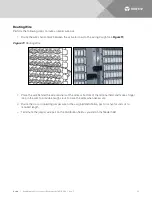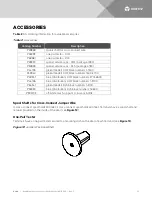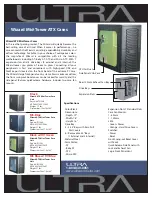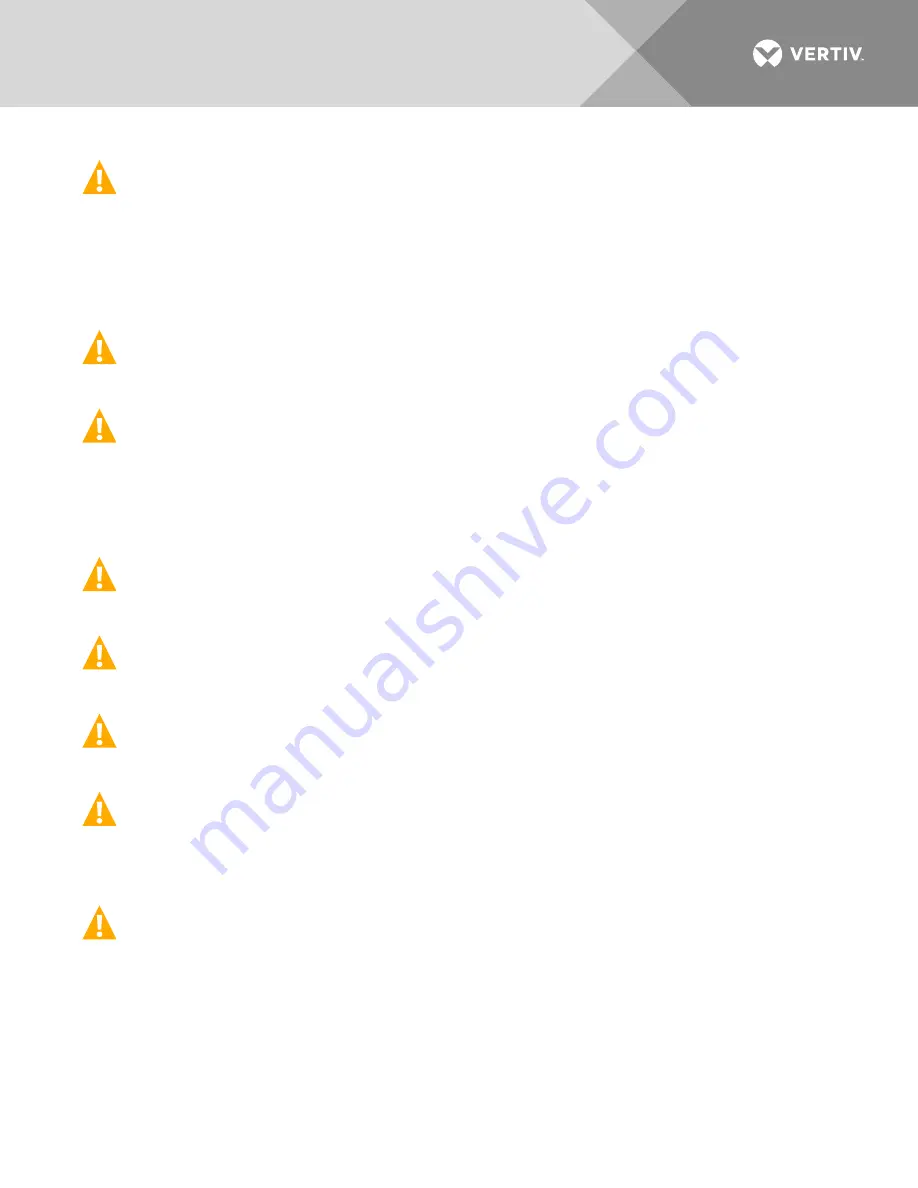
Vertiv
|
Aerial Ultracab Cross-Connect Enclosures (631-201-009)
|
Rev. F
9
CAUTION!
PREVENT EQUIPMENT DAMAGE, PROPER HANDLING
Do not stack nor lay the enclosure on its side.
Similarly, do not stack batteries or lay them on their side. Do not tip batteries -- keep in upright position
at all times.
To avoid possible personnel injury or damage to the enclosure, do not remove it from the pallet until at
the installation site, at the point of transfer onto the pad.
DANGER!
PREVENT EQUIPMENT DAMAGE, MAINTAIN VENTILATION
To optimize the service life of this equipment, make sure there are no obstructions in front of the
ventilation openings.
WARNING!
RISK OF INJURY, FROM UNSECURED ENCLOSURE
Do not push or lean against an unsecured (unbolted) enclosure as it may tip over causing bodily injury.
Do not pull cables, terminate cables, install or place any batteries or rectifiers until enclosure has been
secured onto a pad.
Use caution when opening and closing doors to an enclosure not secured onto a pad.
WARNING!
RISK OF INJURY TO EYES AND SKIN, FROM OPTIC DEVICES
Do not look into a fiber cable or device, nor hold such cable or device against body, fabric or other
material.
WARNING!
RISK OF HAZARDOUS SUBSTANCES
After handling of the enclosure or any such component, such as batteries, cables, busbars, etc., always
wash hands immediately after.
WARNING!
RISK OF EXPLOSION
For safety reasons, never restrict or block the airflow through the door or entry panel ventilation
openings.
CAUTION!
PREVENT EQUIPMENT DAMAGE, FROM CONDENSATION
Until the enclosure is turned up for service, the bags of desiccant shipped with the enclosure must
remain in the enclosure to prevent condensation.
Once service is in-place, remove the desiccant.
CAUTION!
PREVENT EQUIPMENT DAMAGE, BUILD A GOOD PAD
The pad should be level to within 1/4 in (6.4 mm) over the entire length and width, with a crown in the
middle to prevent any pooling of water and twist to the enclosure frame.
When mounting the enclosure on a pad, the compression strength of the concrete pad used must be a
minimum of 4000 psi as determined by ASTM C39 test of compression strength of concrete cylinders.
Always use a barrier pad between the concrete and the pad to prevent corrosion.


